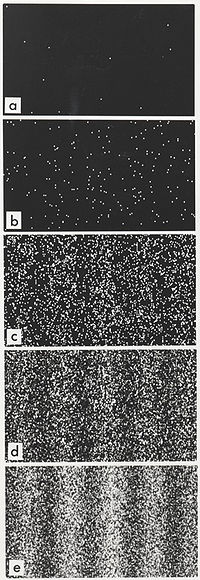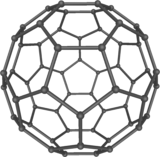Where you witness something unbelievable, what would you first do? You might first rub your eyes, pinch your skin, or do something else to guage the faculty of your senses, if these fail to help you reconcile your observation with your beliefs eventually you would likely look to someone or something outside yourself to confirm or disconfirm your sensory input. This is because most of us trust our senses as far as they confirm our prejudices, but when our senses do not confirm our suspicions we seek a “reality check”. In this sense “Reality” is a yardstick.
If you are willing to discard your prejudices when they do not agree with observation then you may be considered an Empericist. If you can do this dutifully, damn the consequences to your worldview, I commend you, though I may or may not agree with you - I am presently undecided on this particular issue.
But what if what you observe defies any logical explanation? What if even the most self-evident premises must be discarded as a result of what you see, would you sooner discard your axioms or your eyes?
In order to shed some light, or, rather, cast some shadows on 'Reality' I would like to refer you to the wave vs the particle nature of light, the double-slit experiment, and the Law of the Excluded Middle (LEM).
So - Light – a wave or a particle?
You are likely familiar with this question, and it's answer, both. If so, you can skip this section.
First, why the either or w/r/t wave vs particle - can it be both? Well, wave and particle natures seem to be mutually exclusive. To try and skirt the issue with a linguistic sleight of hand like, "it's a wave of particles" wont work. Waves can travel through a medium composed of particles, but those particles are not the wave. Waves are spread-out, continuous, while particles are discrete, discontinuous. It seems that one thing can not be both, and the LEM (more later) would require you to choose one.
If you have ever seen a rainbow, you have seen light present it’s wave nature to you. A rainbow is a diffraction pattern - a property of waves. Also, when light shines through a single slit it spreads out radially, just as waves of water will when passing through the narrow opening to a bay. The wave-nature of light is implicit (or is it explicit) in the way we describe light by its wavelength and frequency.
Clearly, light is a wave.
Or is it a particle?
Einstein* may be best known for Relativity, but he won the Nobel Prize for his work on the Photoelectric Effect. The Photoelectric Effect is seen when light shines on metal. If the light is of a frequency higher than that of yellow light an electron can be ejected from the metal. If you shine a brighter light more electrons will be ejected, but they will each have the same amount of energy, dim the light, and fewer electrons will be ejected, but they too will have the same energy. Shine a red light (which has a lower frequency, which is to say, a lower energy), and no matter how bright the light no electrons will be liberated. Shine a higher frequency light (even a dim one) and electrons will leap even more vigorously from the surface. Einstein explained this by invoking Plank’s idea of quanta. Light comes as discrete pieces of energy – photons – and the amount of energy they have is determined by their frequency (or vice-versa). In order to liberate an electron you must have a photon with enough energy to strip the electron from its atom. Brighter lights do not have more energetic photons, they just have more of them.
So if light comes in discrete packages of energy then it is clearly a particle.
It would seem that we just proved (in an admittedly slipshod, blogosphere fashion) two mutually exclusive things.
Let us return to the question of what happens when we shine a light through a slit.
When a wave meets two slits, first you may notice that two waves begin to radiate out - one from each slit:

What happens if two wave patterns meet? An interference pattern** is seen.

The same is true if light is shone through two slits. An interference pattern results and this pattern looks just as one would expect from the interactions of two wave-fronts.
But what happens if you shine light through two slits one photon at a time? This single particle must not take two paths, it must pass though one slit or the other (or neither), right? Well, if you shoot photon after photon at a pair of slits what you eventually get is this:

At first you see single photon marks on the screen, but as they build up an interference pattern emerges. Remember, you were only shooting one photon at a time, but now we see an interference pattern. This means that the photon is interfering with itself! If you shine the photons through a single slit no such pattern emerges. It seems that each single photon has to be going through two slits. If that isn’t strange enough for you, then how about the fact*** that this pattern of a single thing interfering with itself has been demonstrated with not just “massless” photons but with electrons, protons, even molecules as large as Buckminsterfullerene.**** Even a Buckyball can cancel itself out!*5*
OK, so light acts as a wave, and light acts as a particle*6*, ‘it just depends on how you look at it’. Do an experiment looking for the wave nature, and you’ll find it. Do one looking for the particle nature, and instead you’ll find that. What’s the big deal? The big deal is that, if you’ve just accepted that, then you’ve accepted that ‘Reality’ is defined by the observer. If ‘Reality’ is defined by the observer, then what the heck is ‘Objective Reality'? What good does it do to look outside yourself for confirmation or disconfirmation of your prejudices*7*?
There is an alternative. That alternative is to reject the LEM*8*. In logic terms the LEM states that either A or not A is true for all things – every proposition is either true or it is false. Everything must be one or the other. This is so basic a premise as to almost not even need to be stated for some. Ah, the LEM, what a powerful principle. Many a logic proof I short-cut by assuming the opposite of my conclusion, proving an absurdity, evoking the LED & smugly stating QED. I think that the LEM, and its acceptance, often so profoundly accepted as to be not even considered as possibly erroneous, gets at the heart of what's wrong with 'Reality'.
'Reality' is an illusion.
This illusion results from the assumption of the LEM and a short series of syllogisms. I will develop this in a later post, as this one has already become unwieldy, and I do not want this very important point to get buried at the bottom of a post.
---------------------------------------------------------------------------------
*Einstein was almost certainly not an Empericist. For one, he developed Relativity based on what are called thought experiments (Gedankenexperiment or Gedankenversuch) and which occur entirely within the mind, without the laboratory. Relativity toppled Newtonian physics, which is evidenced all around us. Nonetheless, Einstein used pure reason to conclude that Newton was wrong. What's more, when asked what he would do if the first experimental tests of Relativity did not agree with his predictions he said something like, I will feel sorry for the experimenters - the theory is too beautiful to be wrong. Additionally, even though the Photoelectric Effect gave birth to Quantum Physics (QP) Einstein never accepted the conclusions of QP that did not jive with the Determinist philosophy. For the latter part of his life was regarded by his colleagues at Princeton’s Institute for Advanced Study (with the quite notable exception of Gödel) as cute but antiquated sort of scientific dinosaur.
**The diagrams in this link show nicely demonstrative pictures of constructive and destructive interference patterns.
***'Fact', as in something observable and reproducible and available to anyone who should care to look for it.
****Buckminsterfullerene, aka the Most Beautiful Molecule (though personally I'm partial to porphyrins, which form the business end of hemoglobin as well as chlorophyl and have a wonderful symmetry), aka the Buckyball is composed of 60 carbon atoms arranged in a graphite-like structure that curves lack on itself forming a ball that “looks like” this:

*5*Perhaps it shouldn’t be any more remarkable that a Buckyball can cancel itself out (create an interference pattern with areas of negative interference) than it is that photons or electrons can do this, but it really amazes me. I just imagine spacetime making a sort of slurp/sucking sound as the soccer-like Buckyball vanishes. And if this happens for Buckballs, then it would seem it could happen for anything, baseballs, humans, galaxies…etc. For this reason I always try to keep only one door in my house open at a time.
*6*And, as you’ve seen above, so does everything else.
*7* Someone please answer this for me. It feels like it must be a good thing to do, but I can’t articulate how or why.
*8* aka principium tertii exclusi, aka priciple of bivalence, aka a bunch of other things